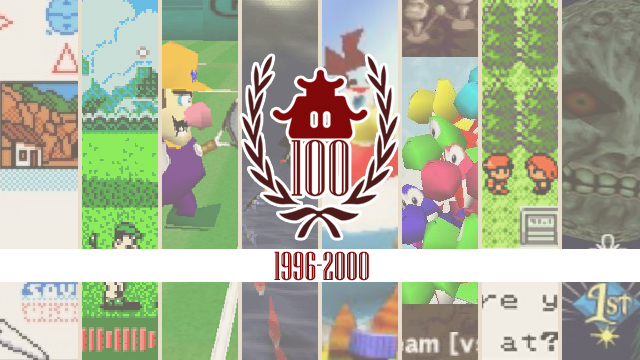
10. Wario Land 3 (2000)
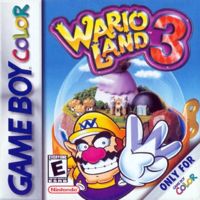
It takes a special 2D game to make it onto a list dominated by 3D platformers and racers, and Wario Land 3 is just such a game. Proving the side-scroller still had quite a bit of life left in it, Wario Land 3 was the culmination of Nintendo’s experimental subseries. Borrowing equal parts from Metroid and Mario, Wario’s adventure in the music box was marked by its complex levels and his penchant for punishment. You see, unlike other 2D platformers (save for its own predecessor, Wario Land 2), Wario couldn’t die; rather, each attack he suffered would transform him based upon the element of that attack (sort of like an inverse Kirby). These afflictions were then used to bypass certain obstacles, and Wario had to utilize the full range of his masochistic powers to successfully navigate to the end of each stage. While the Wario Land series would eventually splinter off into mediocrity following the game, Wario Land 3, with its innovative approach to side-scrolling and its intricate level design, proved to be a fitting swansong for the lovable antihero.
Why Nicolas Vestre loves Wario Land 3…
Wario Land 3 borrowed elements from the Metroid series with great success. Instead of the antihero having all his signature moves from the get-go, they were earned over time. Sometimes a butt stomp or a high-powered jump is all that keeps you from victory, but you have to earn these abilities, making for absolutely massive replay value. A seemingly simple level could become a delightful labyrinth with treasure at every corner. Going through the levels over and over and always finding new and exciting challenges was an absolute joy. To call Wario Land 3 one of the best 2D platformers of all time wouldn’t be a stretch in the least.
9. Pokémon Red and Blue (1998)
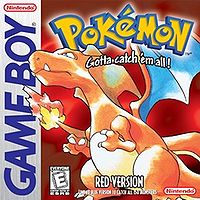
Who would’ve thought that a simple pair of monster-catching titles would launch a cultural phenomenon and become one of Nintendo’s most beloved franchises? Pokémon Red and Blue may not have aged all that gracefully (especially given the limitations of their platform), but back in their day they were two of the most engrossing adventures on any console. Here gamers got their first taste of the unique sights and customs of the world of Pokémon: as a ten-year-old living in the small town of Pallet, players were entrusted with their first Pokémon companion and tasked with exploring the world, documenting the dangerous creatures that lived within it while battling other trainers and toppling an evil crime syndicate bent on world domination. It may not, admittedly, have made all that much sense, but like any good RPG, the games were more about their sense of adventure than the minutiae of their plot, and in this regard Pokémon Red and Blue were a resounding success; Kanto felt like a massive, living world in which you could get lost, and it was easy to spend hours in its many forest and caves, searching for that perfect Pokémon to round out your team. There’s a reason why the series became so popular.
Why Joseph Nelson loves Pokémon Red and Blue…
The pair that started it all. The feelings of excitement and glee that coursed through my 10-year-old head cannot be adequately conveyed, so I’ll use an analogy. You leave home on an adventure, all alone, when you don’t really consider yourself old enough but hey, society says you are. You’re meant to be learning, but you’re more interested in encountering strange creatures, making new friends for life, and earning a reputation for yourself. You’ll get into fights, and lose money buying things you don’t really need (but just in case, right?). You slug away, completing this list that some Professor (who says he knows everything on the subject) has compiled, and you go and see him every now and then to see how well you’re doing. And at the end of all this work, you get a diploma? As far as I’m concerned, Pokémon Red and Blue were preparation for my degree.
8. Super Smash Bros. (1999)
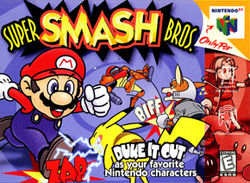
Imagine, if you will, a time when fun mattered more than skill– a time where getting your friends to come over to your house was a rare, but great, achievement, as that was the only way you could play games together. Super Smash Bros., the franchise crossover game that, well, created a franchise of its own, all but embodies this mystical time. Sure, there was always That Guy (probably you), who owned the game and played it well enough to beat everybody else, but there were also all those crazy items that made it all but impossible to guarantee a victory for even the most powerful of players. Much as Mario Kart 64 did with its Spiny Shells to change the balance between skill and luck forever, so did Super Smash Bros. for fighting games with its Beam Sword, Bo-Bomb, and Motion Detector Bombs. (Among a whole host of other items, naturally.) Judging by the various, ahem, reimaginings of Super Smash Bros. that have appeared since its inception (ranging from Digimon Battle Spirit to Viewtiful Joe: Red Hot Rumble), we think HAL Laboratory had something good going on here.
Why Andrew Hsieh loves Super Smash Bros.…
Just a few years ago, my friends asked me if I had Super Smash Bros. in my shiny new apartment– and of course I replied “uh, duh,” taking out my brand-new copy of Super Smash Bros. Brawl to go with my Wii. My friends seemed distraught. “No, um … the old one,” they said, clearly put off by the superior graphics and variety of characters in SSBB. So what could I do without an N64 in the apartment? Well, thank Nintendo for Virtual Console. Because without Virtual Console, my friends and I would be hard-pressed to play this idol of college dorm days and bleary-eyed overnight stays, this beautiful beast of a game that demands neither incredible skill nor long hours perfecting chain-grabs (though if you did that, fine, be that guy). Super Smash Bros. remains to this day not a testament to graphical or aural prowess, but technical and dare-I-say artistic prowess– it’s the rare game whose graphics are constantly neglected in favor of gameplay, because it’s just that good of a game. Meanwhile, of course, there’s the appeal of having Kirby suck up D.K. and jump off Yoshi’s Story. There’s that, too.
7. Banjo-Kazooie (1998)
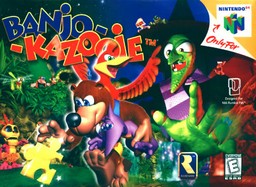
While we may have never gotten a true sequel to Super Mario 64, Rare’s Banjo-Kazooie more than filled that void. The first 3D platformer developed by the company, Banjo-Kazooie took the gameplay ideas pioneered by Nintendo’s title and refined them to an unparalleled degree. Not only were there more collectibles to find, but the entire game simply felt more expansive. No longer were levels made up of abstract platforms and bland textures; now they were all genuine worlds to explore, each with their own unique landmarks and inhabitants. It really felt like Rare had injected life into the game, creating some of the most beautiful locales the console had ever seen. Best of all, teaming the terrestrial Banjo with an avian partner allowed for some unique tag-team moves that expanded the depth of the gameplay (and added plenty of brash humor to boot). It may not have been all that original, but Banjo-Kazooie is still one of Rare’s finest achievements.
Why Kevin Knezevic loves Banjo-Kazooie…
As revolutionary as Super Mario 64 was, I’ve always been more partial to Banjo-Kazooie. Rare’s take on the 64-bit platformer may not have been all that original (especially in the face of Mario’s innovations), but as far as I was concerned, it perfected the foundation laid down by Nintendo. What most appealed to me was the attention to detail found in each of its levels; you genuinely felt like you had stepped into a living, breathing world each time you entered one of its stages, which was a far cry from platforming challenges that made up Peach’s castle in Super Mario 64. Couple this with its whimsical soundtrack and quirky humor, and you can see why I was more enamored with Rare’s title than I was with Nintendo’s. Mario may have invented the 3D platformer, but Banjo-Kazooie took it to new heights.
6. Perfect Dark (2000)
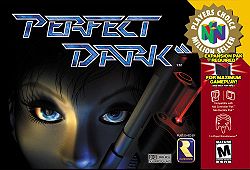
Everyone seems to forget Perfect Dark when discussing console first-person shooters, and that’s not necessarily unwarranted– its story is just a shade blander than that of GoldenEye 007, with which it shares an engine (and lots of practice development time for Rare), and even including Joanna Dark, its characters are a bit two-dimensional. But avid fans will tell you about the focus on detail that was apparent in Perfect Dark from even before it was released. (Bonus points for anyone who remembers the Carrington Institute alternate reality game.) An unprecedented number of multiplayer options awaited anyone who had longed for an upgrade to GoldenEye 007, and Rare finally felt confident enough to include bots in those options– a sign of a much-needed boost to computer AI. Unfortunately, framerate issues bogged down the game somewhat, even with the Expansion Pak, but you know what? That’s totally forgivable. Anything for a totally customizable, bursting-full-with-weaponry-possibilities game like Perfect Dark.
Why Katharine Byrne loves Perfect Dark…
Poor Perfect Dark. Always overshadowed by big brother GoldenEye. I feel your pain, Perfect Dark, I really do, and that’s why I love you more than James Bond and all his magical gadgets. You had the infamous Laptop Gun after all, which is clearly the best weapon ever created, and I’ll never forget just how many kills I earned with all those sneaky Laptop turrets in your vastly superior multiplayer mode. You also looked like you took place in the same gritty, dystopian universe as Deus Ex (plus a few aliens), and each mission stretched the boundaries of my young imagination that bit further. I also loved wandering round the Carrington Institute, your home hub in between missions, and taking down a few target practice missions to switch up the pace. You built on everything GoldenEye achieved and more, giving Nintendo 64 another FPS it could be proud of (even though general consensus still thinks GoldenEye‘s better). We’ll show them though… someday.




 ShareThis
ShareThis







This article has made me feel really nostalgic… maybe it’s time to play and finish Ocarina of Time for the 100th time!